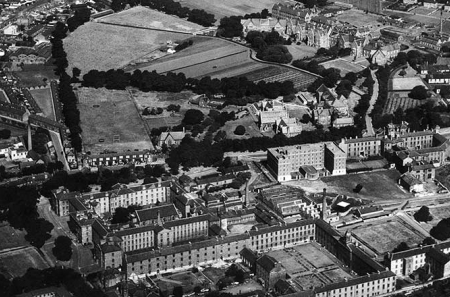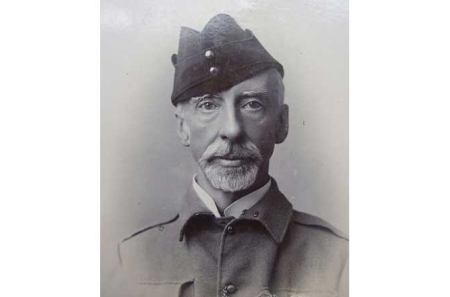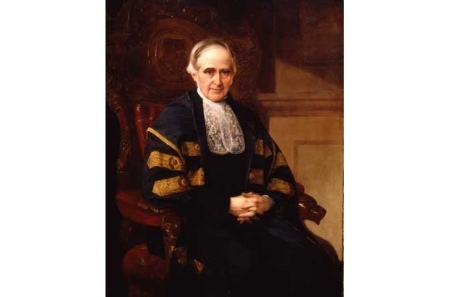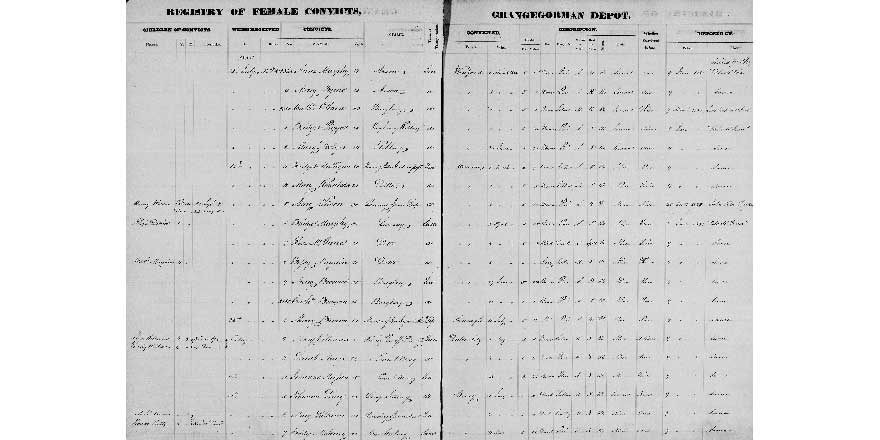
‘From vice to virtue, from idleness to industry, from profaneness to practical religion’ - Grangegorman penitentiary
06 March 2023Downloads
Joan Kavanagh, author and historian, has documented the experiences of women and girls transported from Ireland to the Australian colonies during the 19th Century. Here, Joan discovers the history of the Clock Tower Building, originally constructed as a penitentiary and later the Grangegorman Transportation Depot.
The Grangegorman neighbourhood has had a long and complex history as an institutional quarter, since the early nineteenth century. The Clock Tower building was constructed as a penitentiary, and the history of the building as a place of incarceration can be traced across more than seventy years, from 1823 to 1897, through the annual reports of the inspectors general of prisons in Ireland. It was utilised first as a fever hospital, however; then as a prison for male and female offenders, a female-only penitentiary, a female convict depot; as a cholera hospital; and finally as an asylum.
Conceived as a penitentiary—a place where both the physical and moral wellbeing of the prisoner could be enhanced—Grangegorman was seen as a way of turning criminals from ‘vice to virtue’ and returning them to society as penitent and reformed characters. This was to be achieved through the ‘separate system’: totally separating the prisoners by day and by night in single cells.
Prior to this, prisons were ‘places of confinement rather than punishment’, where offenders awaited their sentence—physical punishment, banishment or execution.[1] The penal system was harsh, cruel and inhumane. Often men, women and children—tried and untried—were held together in one room with no hygiene facilities or heating, and no access to fresh air or exercise. Corruption among gaolers was rife.
In the seventeenth and eighteenth century, banishment or transportation of people was a measure utilised by the authorities to rid society of criminals while also providing free labour to the colonies in the West Indies and America. The American War of Independence in 1776 closed off this avenue. Overcrowded gaols forced Britain to find an alternative location for its offenders, leading to the establishment of the Australian penal colonies in New South Wales in 1788 and in Van Diemen’s Land in 1803.
In the eighteenth century, penal reformers like Sir Jeremiah Fitzpatrick and John Howard brought the wretched penal conditions to the attention of the public and the law makers. Legislation was enacted that set out to ensure better architectural design of gaols, with better conditions for the inmates. The welfare of the prisoners, in tandem with their reform through hard work, religious instruction and literacy training, was at the heart of these actions. Consequently, the prisons of the nineteenth century bore little resemblance to what had gone before.
In 1813 the area of Grangegorman was selected for the construction of a penitentiary to hold both male and female prisoners. Richmond Penitentiary was completed in 1816, according to the weathervane atop the Clock Tower building (see Fig. 1). Due to the onset of a fever epidemic, however, the building was used initially as an emergency hospital, but by 1819 it opened its doors to its first criminal inmates. Although described as a penitentiary it never lived up to its name; the construction of the building did not allow for all prisoners to be accommodated in individual cells and so the ‘separate system’, an integral element of a penitentiary, could not be strictly followed. Tensions between the Roman Catholic and Church of Ireland chaplains amid accusations of proselytising led to an enquiry into inmate complaints that they had been mistreated and tortured to convert to Protestantism, resulting in the closure of Richmond Penitentiary 1831. This period of the building’s history has been described as ‘an experiment that failed’.[2]
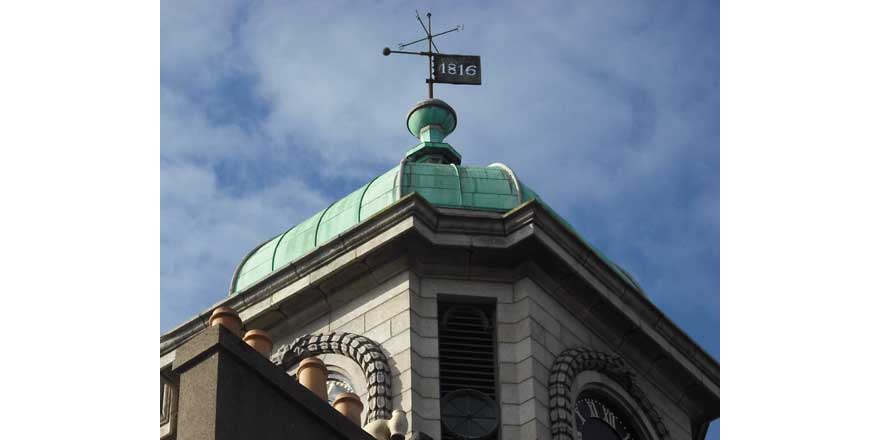
Fig. 1—The weathervane on top of the Clock Tower, Grangegorman, showing the date 1816. (Photo: J. Kavanagh)
The management of female convicts forms an important aspect of the Grangegorman penal story. Female offenders were championed by Mrs Elizabeth Fry, the Quaker prison reformer. Mrs Fry, in her philanthropic work in England and Scotland, had long been an advocate of female prisoners being cared for by female officers in separate buildings from their male counterparts. In 1827 she visited Ireland and chaired a meeting of the newly formed Hibernian Ladies Society for promoting the improvement of Female Prisoners in Dublin. By 1836 the concept of a penitentiary was again a policy pursued by the authorities, and what was now called the Grangegorman Female Penitentiary—the first all-female prison in the British Isles—was opened, to the delight of the inspectors general who in their 1837 report enthused about this new facility.
The new prison had two roles; first, to cater for those females convicted in the City of Dublin and sentenced to a term of imprisonment ranging from twenty-four hours to two years, for crimes such as larceny, receiving stolen goods, violent assaults, deserting children, vagrancy and drunkenness. Second, to receive female convicts under sentence of transportation to the Australian penal colonies from their respective county gaols prior to embarkation. This aspect of the penitentiary’s history adds a transnational element to its narrative.
The matron of Grangegorman was Mrs Marian Rawlins. Having worked in Cold Bath Fields Penitentiary in England, Mrs Rawlins had been recommended by Mrs Fry to act as the first holder of this office. ‘Governess, Teacher of Works and Schoolmistress’ were the duties ascribed to the matron, and whereas she was ‘wholly responsible for the internal government of the Penitentiary’, a governor, Mr Marques, was appointed as being responsible for the ‘safe Custody of the Prisoners’.[3] This, no doubt was because of the legislation at the time that held that ‘It shall not be lawful for any Woman to be Keeper of any Prison’.[4] Favourable accounts of the all-female prison supervised by female officers continued for many years; the 1842 report of the inspector general of prisons stated that the Grangegorman Female Penitentiary was no longer viewed as ‘an experiment’.
The building was constructed in a fan shape, with the areas between each spoke of the ‘fan’ forming yards and exercise grounds (see Fig. 2). The cells were twelve-feet-three-inches square by eleven feet high to the centre of the ceiling, which was arched. The doors were of very thick wood, secured by massive bolts. Twenty cells were generally allocated for the convicts, along with two-day rooms, totally separated from the other inmates. The building could still not accommodate every prisoner in a separate cell at night.

Fig. 2—Plan of Grangegorman Penitentiary,from Fifty-first Report
of the Inspectors General on the State of the Prisons of Ireland (1872).
The women in Grangegorman Female Penitentiary worked at knitting, sewing, laundry, cooking, domestic duties and cleaning the prison. Contracts were undertaken for providing uniforms and laundry services for private residences, earning a profit for the penitentiary that off-set the running costs of the institution. The prisoners received a share of the profits. In addition, there are accounts of women learning to read and write, which were seen as important skills to have on discharge.
The shortness of sentences, however—twenty-four hours for drunkenness and up to a month for vagrancy—did not allow for the reform of all offenders, as the re-committal figures for these offences attest. Out of a total of 71,314 female inmates in Grangegorman between 1885 and 1895, over 33,500 were committed for drunkenness.[5] Recidivists were highlighted in the annual reports, with examples given of how often prisoners had been committed ranging from 63 to 121 occasions.[6]
The diet of the prisoners as noted in the 1843 annual report consisted of eight ounces of oatmeal in stirabout with milk for breakfast and four pounds of potatoes with buttermilk for dinner.[7] By 1848 the diet had been reduced—breakfast was seven ounces of oat and Indian meal made into stirabout with a pint of milk; dinner was one pound of whole wheaten meal bread and a pint of buttermilk—as a means of discouraging recidivism.[8] It was felt that this worked, as the number of committals to Grangegorman decreased during the years of the Great Famine whereas they had increased in almost every other prison throughout the country.
Religious instruction was given to the prisoners by Church of Ireland, Presbyterian and Roman Catholic chaplains. The Sisters of Charity attended the Roman Catholic women on a regular basis. On occasion Rev. Kirby, the Roman Catholic chaplain, accompanied women who had been sentenced to transportation as far as the convict ship, praying with them prior to their departure. Mrs Rawlins was also known to accompany transported women on board ship.
Over 3,200 female convicts, along with hundreds of their free children, were held in the convict section of the penitentiary prior to their transportation to Van Diemen’s Land.[9] The theory behind the Convict Depot was to allow the convicts to be trained in domestic skills, thus affording them better opportunities once they arrived in Van Diemen’s Land. A period of three months was seen as appropriate for this training. In practice, however, not all women received this benefit, as can be seen from the example of the convicts who sailed aboard the Tasmania (2) in 1845.[10] The majority of the 138 convicts spent three months and more in Grangegorman, but more than 30 had arrived into the penitentiary less than one month prior to their embarkation.
The penitentiary’s registers recorded all the relevant personal details of each prisoner, including date and time of reception of each convict; trade or occupation; any previous convictions; and the names and ages of children who accompanied their mothers. In some instances, children already in workhouses were permitted to join their convict mothers in Grangegorman and proceed on the voyage to Australia. The births of babies within the prison were also entered into the register and, sadly, in some instances their deaths (see Fig. 3).
A small proportion of convicts received a commutation of their sentence, granted by the Lord Lieutenant. In other cases the surgeon superintendents of the convict ships rejected some women on the grounds of unfitness for the voyage due to illness. For others still, death befell them while awaiting a ship.
While most convicts had no occupation or trade on entering Grangegorman, on arrival in Van Diemen’s Land all gave an occupation or trade to the colonial officials: country servant, housemaid, laundress, needle-woman, nurse-maid, plain cook were just some of the occupations recorded.[11] Either the training within the Convict Depot was very effective or the women were advised to give an occupation on arrival in Van Diemen’s Land, thereby enhancing their options for employability.

Fig. 3—Registry of female convicts Grangegorman Depot, July 1850
showing the entry for Mary Wilson, Cavan and the birth and death of her son Henry in the Depot
The sentence of transportation ceased in 1852, and was replaced by terms of penal servitude. The Convict Depot at Grangegorman was closed in 1858 and the female convicts were removed to Mountjoy Female Convict Depot. Grangegorman Female Penitentiary was now just a prison for the City of Dublin offenders. In 1874, however, due to overcrowding in the male prison at Richmond Bridewell, the north wing in Grangegorman was fitted up to accommodate male prisoners serving short sentences. What was initially meant to be a temporary arrangement lasted for ten years, and over 30,000 male prisoners passed through the doors of the prison, now referred to in the reports as the County of the City of Dublin Gaol for Females and for Males.[12]
Within two weeks of receiving a direction from the lord lieutenant for the use of Grangegorman Female Prison as an extension to the Richmond Lunatic Asylum, the prison closed.[13] During the penitentiary’s period as a female prison, well over 350,000 women were incarcerated there. On 27 August 1897 thirty-two prisoners were removed from Grangegorman and accommodated in Mountjoy Prison. After more than seventy years, what had once been referred to as the ‘finest prison in Dublin’ ended its time as a penal institution.[14] A new phase was about to begin.
Research resources and further reading
- Reports of the Inspectors General on the State of the Prisons of Ireland, 1823–77.
- Reports of the Inspector of Government Prisons, 1850–52.
- Reports of Directors of Convict Prisons in Ireland, 1854–58.
- Reports of the General Prisons Board, Ireland 1879–97.
These reports are available online through TCD, at https://parlipapers-proquest-com.elib.tcd.ie/parlipapers/search/basic/hcppbasicsearch?product=parlipapers.
Grangegorman Female Prison Registers and Registry of Female Convicts Grangegorman Depot; available on the Find My Past website at: https://search.findmypast.ie/search-ireland-records-in-institutions-and-organisations, and on microfilm in the National Archives of Ireland (see NAI PRIS 1/9/7 MFGS51/028, etc.).
- Patrick Carroll-Burke, Colonial discipline the making of the Irish convict system (Dublin, 2000; Four Courts).
- Elizabeth Fry, Observations on the visiting, superintendence, and government, of female prisoners (London, 1827; J. and A. Arch).
- Henry Heaney, ‘Ireland’s penitentiary 1820–31: an experiment that failed’, Studia Hibernica 14 (1974), 28–39.
- Joan Kavanagh, Wicklow’s historic gaol—Education resource pack, Section 2. (Wicklow, 1998; Wicklow Heritage Project, Wicklow County Council).
- Joan Kavanagh and Dianne Snowden, Van Diemen’s women: a history of transportation to Tasmania (Dublin, 2015; The History Press Ireland).
- Rebecca Lawlor, Crime in nineteenth-century Ireland: Grangegorman female penitentiary and Richmond male penitentiary, with reference to juveniles and women, 1836–60. Unpublished MLitt thesis. National University of Ireland, Maynooth, 2012.
- Oliver MacDonagh, The Inspector General: Sir Jeremiah Fitzpatrick and the politics of social reform, 1783–1802 (London, 1981; Croom Helm).
- Randall McGowan, ‘The well-ordered prison’ in Norval Morris and David J. Rothman (eds), The Oxford history of the prison, 79–109. (Oxford, 1995; Oxford University Press).
- Rod Morgan, ‘Howard, John’, in Oxford dictionary of national biography; available at: https://www-oxforddnb-com.elib.tcd.ie/display/10.1093/ref:odnb/9780198614128.001.0001/odnb-9780198614128-e-13922?rskey=65j8nE&result=11.
- T. King Moylan, The district of Grangegorman, Part II, Dublin Historical Record 7 (2) (March–May 1945), 55–68.
- Bláithnaid Nolan, Power, punishment and penance: an archival analysis of the transportation of Irish women from Grangegorman in Dublin to Hobart Town in Van Diemen’s Land (Tasmania) from 1844–1853. Unpublished PhD thesis. University College Dublin, 2013.
1. Sixth Report of the Inspectors General on the State of the Prisons of Ireland (1828), p. 16.
2. Patrick Carroll-Burke, Colonial discipline the making of the Irish convict system (Dublin, 2000; Four Courts Press), p. 21.Henry Heaney, 'Ireland's penitentiary 1820-31: an experiment that failed', Studia Hibernica 14 (1974), pp 28-39.
4. Sixteenth Report of the Inspectors-General on the General State of the Prisons of Ireland (1837), pp 8-9.
5. 7 Geo. IV, c. 74, Prisons (Ireland) Act (1826).
6. Reports of the General Prisons Board, Ireland, 1885-96.
7. Twenty-ninth Report of the Inspectors-General on the General State of the Prisons of Ireland (1850), p. 11.
8. Twenty-second Report of the Inspectors-General on the General State of the Prisons of Ireland (1843), p. 24.
9. Twenty-sixth Report of the Inspectors-General on the General State of the Prisons of Ireland (1848), pp 38, 41.
10. 'Grangegorman Histories: honouring the past', History Ireland 5 (September/October 2020), News, vol. 28; available at: https://www.historyireland.com/grangegorman-histories-honouring-the-past/.
11. Joan Kavanagh and Dianne Snowden, Van Diemen's women: a history of transportation to Tasmania (Dublin, 2015; The History Press Ireland).
12. Kavanagh and Snowden, Van Diemen's women. See also, Libraries Tasmania, 'Convicts in Van Diemen's Land, now Tasmania', at https://libraries.tas.gov.au/family-history/convicts-in-van-diemens-land-now-tasmania/.
13. Fifty-third Report of the Inspectors-General on the General State of the Prisons of Ireland (1874), p. 139.
14. Twentieth Report of the General Prisons Board, Ireland (1897-8), p. 5.
15. Twenty-seventh Report of the Inspectors-General on the General State of the Prisons of Ireland (1848), p. 34.

